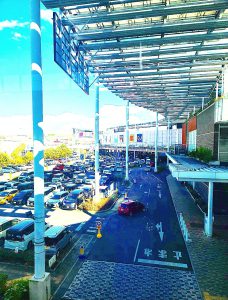Lessons learnt from the Yashio City cave-in accident on Japan’s infrastructure maintenance and disaster response
- 2025.02.04
- 月刊芳美
Lessons learnt from the Yashio City cave-in accident on Japan’s infrastructure maintenance and disaster response
1. 八潮市の陥没事故が示した課題
2025年2月、埼玉県八潮市で突如発生した道路陥没事故は、日本のインフラ管理と災害対応の課題を浮き彫りにした。老朽化した地下インフラが原因で発生したこの事故では、救助に32時間を要し、対応の遅れが指摘された。過去の震災から多くを学んできたはずの日本だが、その教訓が十分に活かされていない現実が明らかになった。
2. インフラ管理と緊急対応の限界
日本のインフラは高度経済成長期に整備されたものが多く、老朽化が進んでいる。しかし、予算不足や人材不足により適切な維持管理ができず、危険な状態のまま放置されるケースが増えている。また、災害発生時の対応にも課題がある。指揮系統の複雑さ、情報共有の遅れ、機動力を持つ救助部隊の不足などが、迅速な救助を妨げている。
3. 他国の先進事例に学ぶ即応力の重要性
米国のFEMA(連邦緊急事態管理庁)やドイツのTHW(技術救助隊)では、災害対応に特化した専門部隊を配置し、機動力と即応力を重視している。例えば、USAR(都市型捜索救助部隊)は、高度な訓練を受けた特殊部隊が迅速に現場に駆けつけ、短時間で救助活動を開始できる体制を整えている。こうしたシステムは、日本にとっても参考になるが、高度な訓練や設備投資には相応のコストがかかるという課題もある。
4. 日本に求められる災害対応の改革
八潮市の事故を教訓に、日本でも即応力の高い災害対応体制の確立が急務だ。具体的には、以下の3つの改革が求められる。
スマート・インフラ管理の導入
AIや地中レーダーを活用し、リアルタイムでインフラの劣化状況を監視。異常を早期に発見し、事故を未然に防ぐ。
即応性の高い特殊部隊(DRT)の設立
USARやTHWを参考に、日本独自の機動力ある特殊部隊を編成。訓練を強化し、迅速な対応を可能にする。
指揮系統の改善と情報共有の強化
指揮系統を簡素化し、意思決定を迅速化。AIを活用した情報統合システムを導入し、リアルタイムでの状況把握を可能にする。
5. 災害対応に必要な人材育成
災害対応の成否は、現場の判断力に大きく左右される。自治体職員やボランティアが冷静に状況を把握し、適切な資源を活用できるように、事前の訓練やシミュレーションを充実させる必要がある。限られたリソースを最大限活用する調整力も重要であり、地域レベルでの実践的な教育が不可欠だ。
6. まとめ:変革は可能だ
八潮市の事故は、日本のインフラ管理と災害対応の課題を示す警鐘だった。しかし、これを教訓として技術導入や体制改革を進めれば、より安全な社会の実現は可能だ。今こそ、即応力のある災害対応体制を確立し、市民の安全を守る新たなステップを踏み出すべきである。
💕
Lessons learnt from the Yashio City cave-in accident on Japan’s infrastructure maintenance and disaster response
1. Challenges presented by the Yashio City cave-in accident
The road cave-in accident that suddenly occurred in Yashio City, Saitama Prefecture, in February 2025, highlighted the challenges of infrastructure management and disaster response in Japan. The accident, which was caused by ageing underground infrastructure, took 32 hours to rescue the victims, indicating a slow response. Japan is supposed to have learnt a lot from past disasters, but the reality that these lessons have not been fully utilised became apparent.
2. limitations of infrastructure management and emergency response
Many of Japan’s infrastructures were built during the period of rapid economic growth and are now deteriorating. However, due to budget shortfalls and lack of human resources, proper maintenance and management is not possible, and more and more are left in a dangerous state. There are also challenges in responding to disasters. The complexity of the chain of command, delays in information sharing and a lack of mobile rescue units hinder rapid rescue.
3. the importance of readiness learned from advanced examples in other countriesThe
Federal Emergency Management Agency (FEMA) in the United States and the German Technical Rescue Team (THW) have specialised units dedicated to disaster response, placing emphasis on mobility and readiness. For example, the USAR (Urban Search and Rescue Unit) has a system in place whereby highly trained special units can quickly rush to the scene and begin rescue operations within a short time. Such a system would be a useful reference for Japan, but there is also the issue of the reasonable costs involved in investing in advanced training and equipment.
4. disaster response reforms required in Japan
Learning from the Yashio disaster, Japan urgently needs to establish a disaster response system with a high level of readiness to respond to disasters. Specifically, the following three reforms are required.
Introduction of Smart Infrastructure Management
Monitor infrastructure deterioration in real time using AI and ground-penetrating radar. Abnormalities are detected at an early stage and accidents are prevented.
Establishment of quick-response special forces (DRTs)
Organise Japan’s own mobile special forces with reference to the USAR and THW. Strengthen training and enable rapid response.
Improve the chain of command and enhance information sharing
Simplify the chain of command and speed up decision-making; introduce an AI-based information integration system to enable real-time situational awareness.
5. human resource development necessary for disaster responseThe
success or failure of a disaster response depends largely on the ability to make decisions on the ground. Preliminary training and simulations need to be enhanced so that local government officials and volunteers can calmly assess the situation and utilise appropriate resources. Coordination skills to make the best use of limited resources are also important, and practical education at the local level is essential.
6. in summary: change is possibleThe
Yashio accident was a wake-up call for Japan’s infrastructure management and disaster response challenges. However, it is possible to realise a safer society if lessons are learnt and technology is introduced and systems are reformed. Now is the time to establish a disaster response system with the ability to respond quickly and take new steps to protect the safety of citizens.
